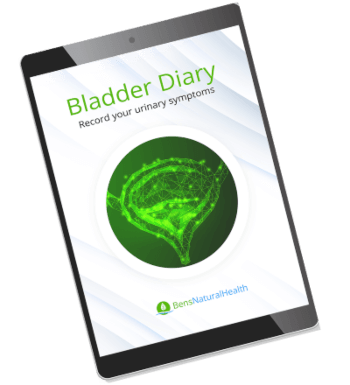Problems with urine flow affect a man’s quality of life. But the problem is that these problems are usually left ignored.
This is not the wisest approach because ignoring these issues can cause various complications.
Obstructive uropathy is a great example of a potentially serious condition that may cause severe problems if not treated properly.
To learn more about obstructive uropathy, how to recognize it, and when to see a doctor, scroll down.
What is obstructive uropathy?
Obstructive uropathy, also known as obstructive nephropathy, is a blockage of the urinary flow that affects one or both kidneys. In other words, a person can develop unilateral obstructive uropathy or bilateral. (1)
Various structural and functional problems can obstruct urinary flow, cause a wide range of symptoms, and lead to renal impairment. As a potentially serious condition, obstructive uropathy affects people of different ages.
Men and women alike can develop this condition. What’s more, unborn children during pregnancy may also develop obstructive uropathy.
The prevalence of obstructive uropathy ranges from five in 10,000 to five in 1,000 people, depending on the cause.
The condition becomes more prevalent with increasing age and is particularly common in men with enlarged prostate or neurogenic bladder. Some patients with obstructive uropathy don’t have symptoms, whereas others have severe manifestations, including acute renal failure. Acute kidney injury is manageable, but some patients may develop chronic problems with greater complications. (2)
Causes and risk factors
Obstructive uropathy develops in cases when urine is unable to drain through the urinary tract. When that happens, urine tends to back up into the kidney.
Then, hydronephrosis or swelling of the kidney ensues. One or both kidneys can be affected by acute or chronic obstructive uropathy.
Causes
A wide range of causes can lead to the development of obstructive uropathy. They include:
- Benign prostatic hyperplasia (enlarged prostate) – a common condition as men get older; noncancerous enlargement of the prostate gland.
- Bladder stones – hard masses of minerals in the bladder. They develop when the bladder doesn’t empty entirely, thus causing urine to become more concentrated. As a result, concentrated urine becomes crystallized and forms stones.
- Kidney stones – also known as renal calculi, are hard deposits comprised of salts and minerals that develop inside the kidneys.
- Cancer of bladder or urethra – urethral cancer is the rarest of all urological cancers. On the other hand, bladder cancer is relatively more common, and its main symptom is blood in the urine.
- Advanced prostate cancer – happens when a tumor in the prostate spreads outside the gland. In most cases, advanced prostate cancer spreads to bones and lymph nodes. Also known as metastatic prostate cancer, the disease can spread to other organs too.
- Colon cancer – cancer type that begins in the large intestine, i.e., colon. Although it can develop at any age, older adults are most frequently affected.
- Congenital narrowing of the ureter generally below the kidney (ureteropelvic junction obstruction) due to various causes, including inadequate levels of amniotic fluid.
- Posterior urethral valve obstruction.
- Injury to the ureter caused by prior pelvic or abdominal surgery.
Generally speaking, any type of cancer that spreads to other organs and tissues can cause urinary tract obstruction or bladder outlet obstruction. Other causes of obstructive uropathy include problems with the nerves that supply the bladder, scar tissue inside the urethra and/or outside the ureters, and renal fibrosis.
Risk factors
Everyone can develop obstructive uropathy. Some people are at a higher risk than others.
Common risk factors associated with this condition include:
- Having anatomical abnormalities
- Presence of bladder or kidney stones
- Having an enlarged prostate, prostate cancer, and other problems affecting the prostate or being at a high-risk group of developing these conditions.
- Being diagnosed with cancer, especially in the abdominal and pelvic area
- Constipation
- Certain medications such as alpha receptor agonists, anticholinergic agents, narcotic analgesia
- Having a disease of the digestive tract
- Injuries such as pelvic fracture
- Blood clots
Get Your FREE PSA Lowering Diet Plan!
- Naturally lower PSA levels
- Reduce nighttime trips to the bathroom
- Enjoy better bladder control and urine flow
Signs and symptoms of obstructive uropathy
Symptoms of obstructive uropathy depend on whether the condition occurs suddenly or develops gradually and if one or both kidneys are affected.
In most cases, patients experience the following symptoms:
- Fever
- Mild to severe pain or tenderness in the flank on one or both sides
- Weight gain or edema of the kidney
- Nausea and/or vomiting
Men with obstructive uropathy may also experience difficulties passing urine, which manifest themselves through lower urinary tract symptoms such as:
- Urinary frequency
- Dribbling of urine
- Difficulty urinating or reduced force of urine stream
- Inability to empty bladder completely
- Nocturia (frequent need to urinate at night)
- Reduced urine output
- Hematuria (blood in urine)
- Incontinence (leakage of urine)
In cases of partial or slowly developing obstructive uropathy, pain tends to be absent or minimal. Urine volume generally doesn’t diminish in patients with unilateral ureteral obstruction unless it develops in the solitary kidney, i.e., the only functioning kidney.
Complete urinary obstruction at the urethra or bladder level (bilateral obstruction) causes complete anuria (lack of urine production). On the other hand, partial obstruction of the urethra or bladder causes difficulty voiding and other abnormalities with the urine stream.
Get your FREE bladder diary
- Daily bladder diary
- Better understand your urinary symptoms
- Step-by-step guide
When to see a doctor
When left untreated obstructive uropathy can lead to various complications and affect a patient’s quality of life. See a doctor if you experience pain or tenderness in the flank on one or both sides, especially if you also have fever and nausea or vomiting.
Also, lower urinary tract symptoms are a telltale sign something is not okay. Ignoring these symptoms could worsen obstructive uropathy.
The best thing to do is to schedule an appointment to see a doctor who will diagnose the underlying cause and recommend adequate treatment.
Diagnosis
In most patients, a basic metabolic model is performed especially when there’s evidence of obstructive uropathy. The emphasis is on renal function.
In order to rule out urinary tract infection, the healthcare professional usually orders a urinalysis. For guiding further care, the doctor may order urine protein-to-serum creatinine ratio and urine electrolytes.
To assess bladder volume and hydronephrosis severity, healthcare professionals may perform an ultrasound, the least invasive and the most readily available test. Further assessment may require a more comprehensive ultrasound.
The diagnostic process may also involve a CT scan of the pelvis and abdomen, particularly if there’s a concern for tumors and other intra-abdominal pathologies.
Additional tests are necessary in some cases, and they may include voiding cystourethrogram, intravenous pyelogram, renal nuclear scans, and MRI.
Voiding cystourethrogram takes images of the patient’s urinary system. The patient’s bladder is filled with contrast material to take these images. Images of kidneys and bladder are taken as the bladder fills and while the patient is urinating.
On the other hand, an intravenous pyelogram takes images of kidneys and ureters. The test involves injecting an X-ray dye into a vein of the patient’s arm. The dye travels to the kidneys, bladder, and urethra and outlines these structures.
A renal nuclear scan is similar to an intravenous pyelogram, and its main function is to show how your kidneys work.

Treatment for obstructive uropathy
Treatment of obstructive uropathy largely depends on the underlying cause of urethral obstruction. Relief of obstruction to relieve symptoms is the main objective of the treatment.
Obstruction is relieved in several ways, such as surgery, instrumentation, or drug therapy. The latter may include hormonal therapy for patients with prostate cancer.
In patients whose kidney function is compromised, the doctor may recommend prompt drainage of hydronephrosis. This may also be necessary for persistent UTIs and uncontrollable pain. Obstructive uropathy treatment could also include Foley catheters in some patients.
In severe cases of calculi (stones), UTI, and obstructive uropathy, temporary drainage with percutaneous nephrostomy is necessary. Nephrostomy tubes work by draining urine from the kidneys through the back. They bypass the obstruction or blockage.
Basically, stents or drains in the renal pelvis or ureter could provide short-term symptom relief.
If the cause of obstructive uropathy is an enlarged prostate, the doctor may prescribe certain medications. Examples of medications for obstructive uropathy treatment include drugs that block alpha-1-adrenergic receptors (terazosin, tamsulosin), which relax smooth muscle in the prostate and bladder neck.
Even though it’s possible to achieve short-term relief from obstruction without surgery, in some cases, a surgical procedure is necessary to remove the blockage and repair a patient’s urinary system.
Surgery can remove cancerous tumors, scar tissues, and polyps that develop in and around ureters, thereby eliminating the blockage and promoting urine flow.
Timely diagnosis and treatment of obstructive uropathy can reduce the risk of kidney damage such as kidney failure and the need for dialysis.
Lifestyle Changes
Besides adhering to doctor-recommended treatments, it’s also important to have a healthy lifestyle. You may want to:
- Stay hydrated – Drinking plenty of water dilutes urine and flushes out bacteria from your urinary system.
- Warm compresses – Apply warm compresses on flanks, abdomen, or back to alleviate pain. A heating pad or warm towel is practical here, and you can apply them several times a day for 15 minutes.
- Eat enough fiber – Supports bowel movements and prevents or manages constipation.
- Stay active – Promotes a healthy weight and improves digestive health, thereby helping you treat constipation.
Other things you can do include stress management, avoiding straining or holding in, taking probiotic supplements, and practicing safe sex.
Avoid eating foods that irritate your urinary bladder, which also means you should avoid alcohol.
To alleviate UTI symptoms, you may want to drink cranberry juice or use clove, myrrh, and oregano essential oils.
Conclusion
Obstructive uropathy is a potentially serious condition that may lead to chronic kidney damage. Patients with this condition tend to develop a wide range of symptoms.
Various causes lead to obstructive uropathy. Timely diagnosis and treatments are necessary for adequate treatment and prevention of complications.
A lot more clinical trials and related articles on this subject are necessary for better medical education. Considering the prevalence of prostate diseases, cancers, and other problems, it’s safe to say obstructive uropathy is a public health concern that may lead to renal insufficiency.
Explore More









